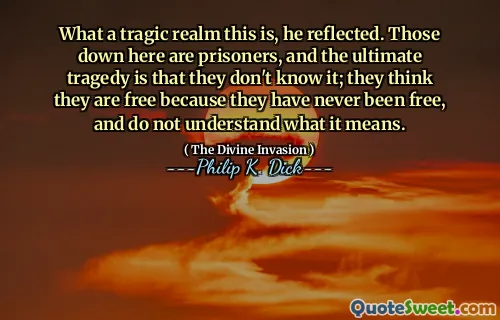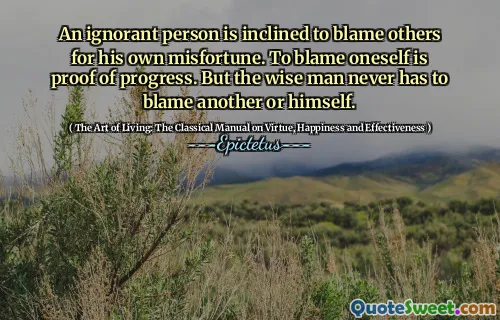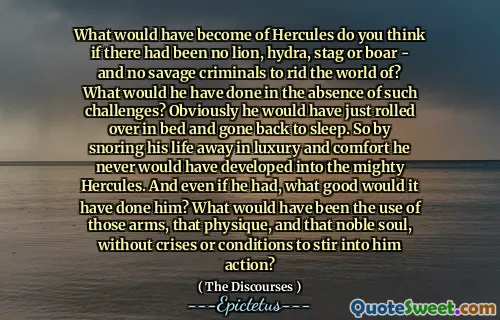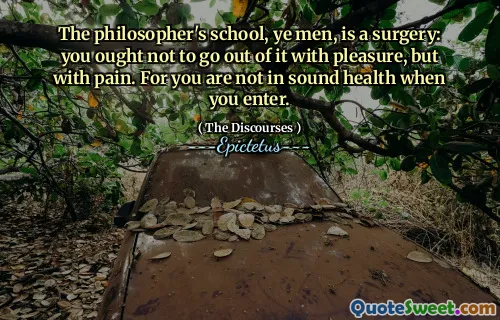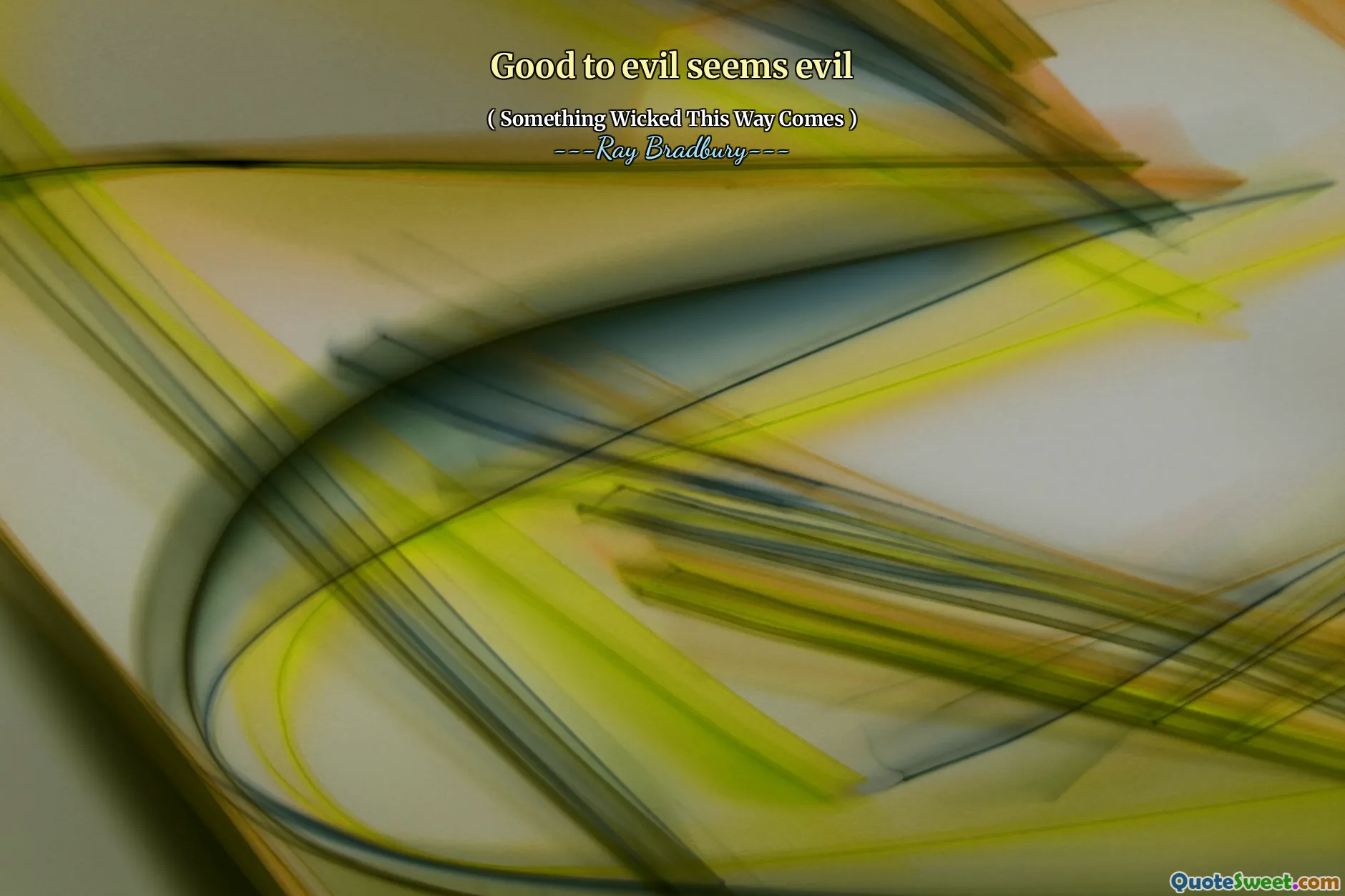
Good to evil seems evil
This quote invites us to reflect on the complex relationship between good and evil, suggesting that what appears to be good might sometimes reveal shades of evil, and vice versa. It challenges the simplistic dichotomy often presented between morality's binary and encourages us to see beyond surface appearances. In real life, actions labeled as 'good' can have unintended negative consequences, and what we deem 'evil' may sometimes stem from understandable motives or circumstances. The nuanced nature of morality implies that perceptions are often subjective and influenced by cultural, contextual, and personal biases.
Understanding this fluidity allows us to approach moral judgments with humility and openness, recognizing that the line between good and evil is frequently blurred. Historical events, personal decisions, and societal norms illustrate that concepts of good and evil are often intertwined, making moral discernment a complex and ongoing process. Embracing this complexity can foster greater empathy and critical thinking, urging us to examine motives, recognize biases, and remain cautious in our judgments.
Ultimately, the quote prompts us to question whether our assumptions about morality are fixed or circumstances-shifted, and it challenges us to reflect on the importance of compassion and understanding even toward those who commit acts we consider evil. Life’s moral ambiguities serve as a reminder that enlightenment often lies within accepting uncertainty and striving to act compassionately, rather than adhering rigidly to simplistic notions of good and evil.

